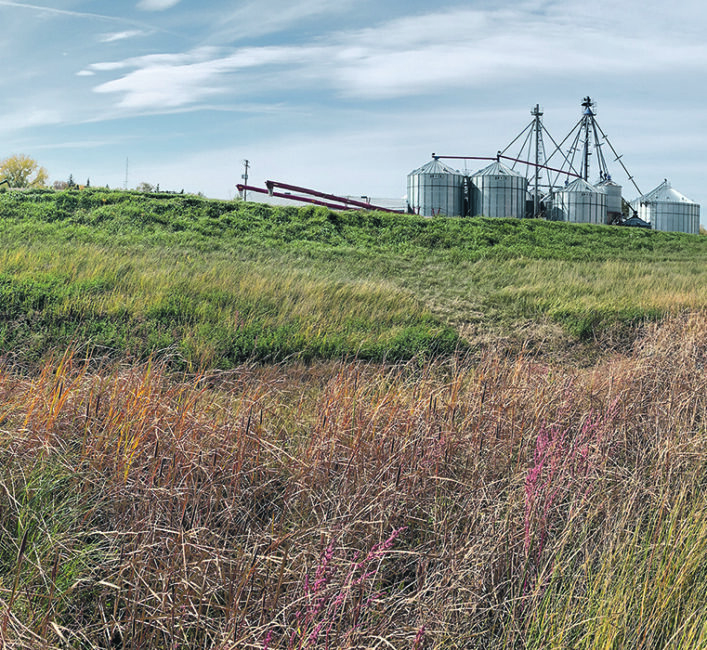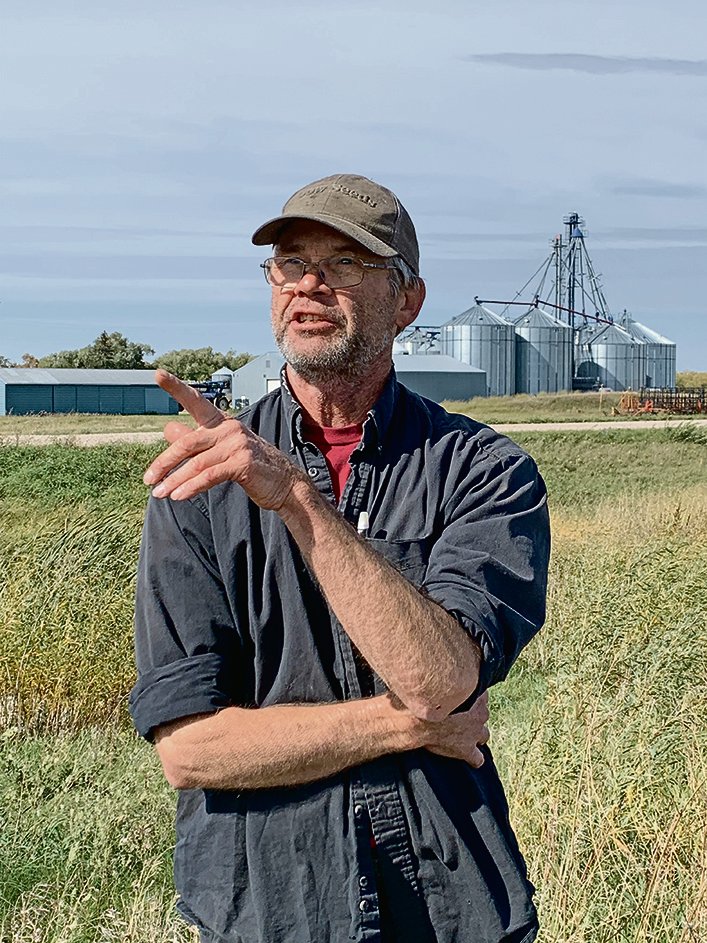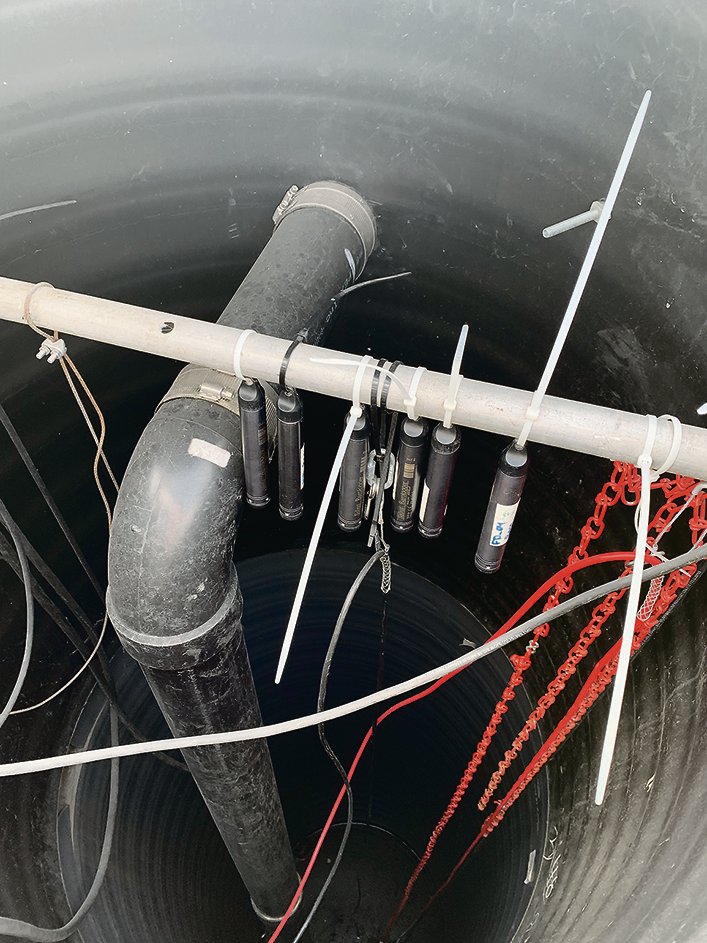Sustainability called evolution, not quick cure

Editor’s note: This story is part of an ongoing series that looks at how many farmers are attempting to preserve their soil while increasing profits.
EMERSON, Man. — When it rains hard around here, the flat, clay soil can hold the water like a pan. It’s rich farmland, but flooding is a perennial issue, and for some farmers, getting water off the fields as fast as possible is what “water management” means.
The “main drain,” a large drainage channel that cuts across this land just north of the U.S. border and a few kilometres east of the Red River, helps farmers move that water off farmland, into the river and eventually down to Lake Winnipeg.
Les Felsch has the same problem with flooding as so many farmers in the Red River Valley and he’s taken steps to manage it, installing tile drainage lines every 30 feet in flood-prone areas. But he doesn’t want to see soil and nutrients flowing off and out of his fields, which lie right beside the main drain.
“I’ve always been a bit of a conservationist,” said Felsch on a late September afternoon, standing beside the dry drainage ditch. Some years the ditch becomes entirely filled with water, but in this year’s drought, there’s nothing even at the bottom of the channel.
Felsch wants to figure out how to get water off his land when he needs to, keep his soil and nutrients in his fields, improve the quality of water flowing down the Red River into Lake Winnipeg, and create a less volatile production system.
For him, the reality of crop production is that much-ballyhooed innovations like variable rate technology sound great in theory, but not always in the field.
“If anybody had a crystal ball and told me every year how much rain I was going to get, I’d know exactly where to put the variable rate fertilizer,” said Felsch, who farms about 4,000 acres in a canola-wheat-soybeans-corn rotation.
“One year it’s the low spots outproducing the high spots. The next year it’s the opposite.”
Other than tile drainage, Felsch also practises strip tillage and other measures to keep his growing environment healthy and less vulnerable to crop crashes and soil degradation.
A 45-acre patch of his land beside the main drain is currently involved in a research project co-ordinated by the Living Labs program, which is being operated in this area by Agriculture Canada, the Manitoba Association of Watersheds, and the Seine Rat Roseau Watershed District. It measures and analyzes the water that flows down the main drain, how neighbouring farm practices affect surface and subsurface runoff and leaching, and how specific actions affect water quantity and quality.
Felsch’s tile drainage outlets are providing the program with valuable insights into what kind of water comes out of tile drains. He wants to know what’s leaving his land and if he’s losing nutrients.
In what might seem like a gutsy move to some, he’s happy to have the program analyze the water flowing out of land that has been fertilized with pig manure.

It’s an openness that researchers and watershed officials appreciate.
“There’s not many people putting hog manure on the land that want us to come and monitor it,” said Jodi Goerzen, manager of the Seine Rat Roseau Watershed Association on a visit to the farm.
“This is a really neat thing.”
Felsch is keen to see the results of the various monitors and gauges that the Living Labs project has inserted into his land and along the drain. He injects liquid hog manure once every four years and thinks it shouldn’t cause a problem with nutrient loading or leakage at the rate and in the way he is using it.
As a former member of the Lake Winnipeg Stewardship Board, he knows about the problems that nutrient pollution from cities, towns and farms are causing to Lake Winnipeg and he’s hoping to find out that his farm isn’t part of it.
“Hopefully, this is going to alleviate some of the finger-pointing,” he said.
Some environmentalists have blamed farmers for over-fertilizing, over tilling and causing unnecessarily violent water outflows through surface drainage. Felsch wants to see what this combination of minimum tillage, tile drainage and careful manure management achieves for water quality.
For him, soil protection, water management, crop productivity and farm stability need to be achieved as a package.

It’s not easy to achieve. He had his tile drains installed in 2015. In 2016, heavy rains caused much flooding, like before.
“I assumed my tile drains were going to save my crop,” Felsch said.
“That didn’t happen.”
But building a solid, sustainable system will always be a work in progress and he hopes the information he gets from testing this one percent of his land gives him a bit more knowledge in the evolution of his management.
This year’s results might be a little wacky when they come in. There were only about 200 millimetres of rain during the season, he said, and on this afternoon there’s nothing flowing down the channel.
But then, when is any year “normal?” All farmers and researchers can do is work with real-world conditions and see what happens.
Source: producer.com

